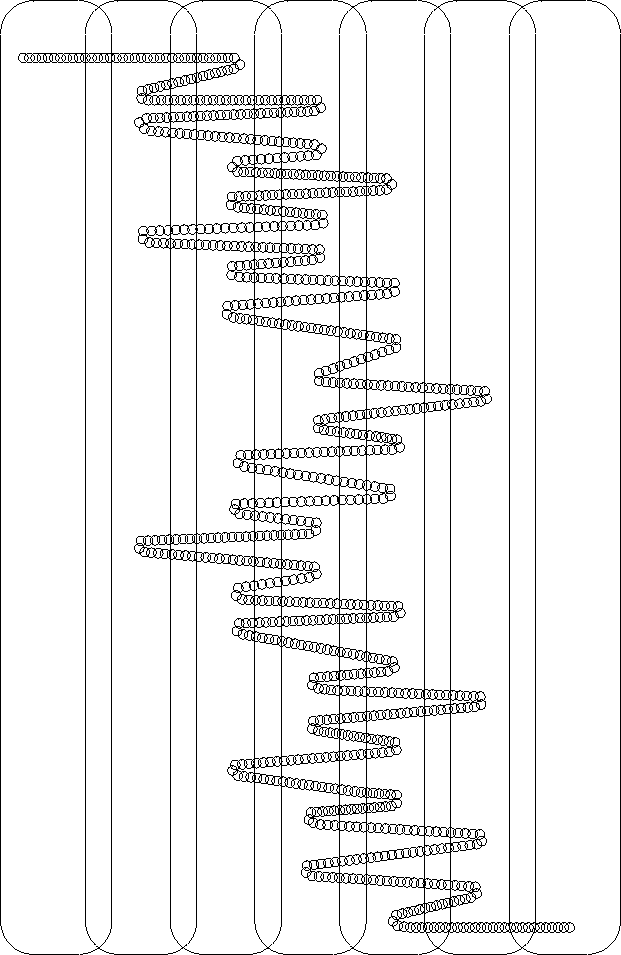 | ||
In general topology, the pseudo-arc is the simplest nondegenerate hereditarily indecomposable continuum. The pseudo-arc is an arc-like homogeneous continuum. R.H. Bing proved that, in a certain well-defined sense, most continua in Rn, n ≥ 2, are homeomorphic to the pseudo-arc.
Contents
History
In 1920, Bronisław Knaster and Kazimierz Kuratowski asked whether a nondegenerate homogeneous continuum in the Euclidean plane R2 must be a Jordan curve. In 1921, Stefan Mazurkiewicz asked whether a nondegenerate continuum in R2 that is homeomorphic to each of its nondegenerate subcontinua must be an arc. In 1922, Knaster discovered the first example of a homogeneous hereditarily indecomposable continuum K, later named the pseudo-arc, giving a negative answer to the Mazurkiewicz question. In 1948, R.H. Bing proved that Knaster's continuum is homogeneous, i.e. for any two of its points there is a homeomorphism taking one to the other. Yet also in 1948, Edwin Moise showed that Knaster's continuum is homeomorphic to each of its non-degenerate subcontinua. Due to its resemblance to the fundamental property of the arc, namely, being homeomorphic to all its nondegenerate subcontinua, Moise called his example M a pseudo-arc. Bing's construction is a modification of Moise's construction of M, which he had first heard described in a lecture. In 1951, Bing proved that all hereditarily indecomposable arc-like continua are homeomorphic — this implies that Knaster's K, Moise's M, and Bing's B are all homeomorphic. Bing also proved that the pseudo-arc is typical among the continua in a Euclidean space of dimension at least 2 or an infinite-dimensional separable Hilbert space.
Construction
The following construction of the pseudo-arc follows (Wayne Lewis 1999).
Chains
At the heart of the definition of the pseudo-arc is the concept of a chain, which is defined as follows:
A chain is a finite collection of open setsWhile being the simplest of the type of spaces listed above, the pseudo-arc is actually very complex. The concept of a chain being crooked (defined below) is what endows the pseudo-arc with its complexity. Informally, it requires a chain to follow a certain recursive zig-zag pattern in another chain. To 'move' from the mth link of the larger chain to the nth, the smaller chain must first move in a crooked manner from the mth link to the (n-1)th link, then in a crooked manner to the (m+1)th link, and then finally to the nth link.
More formally:
Let- each link of
D is a subset of a link ofC , and - for any indices i, j, m, and n with
D i ∩ C m ≠ ∅ ,D j ∩ C n ≠ ∅ , andm < n − 2 , there exist indicesk andℓ withi < k < ℓ < j (ori > k > ℓ > j ) andD k ⊆ C n − 1 D ℓ ⊆ C m + 1 .
Pseudo-arc
For any collection C of sets, let
The pseudo-arc is defined as follows:
Let p and q be distinct points in the plane and- the first link of
C i - the chain
C i 1 / 2 i - the closure of each link of
C i + 1 C i - the chain
C i + 1 C i
